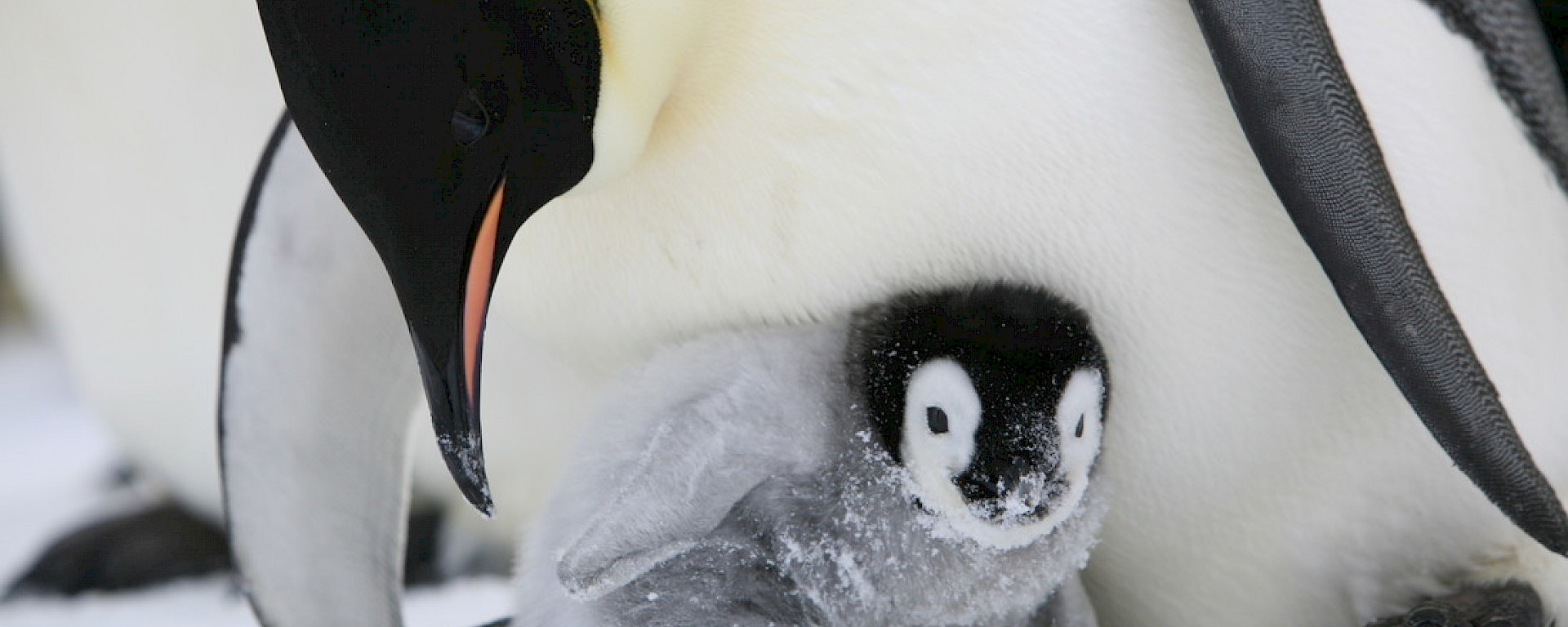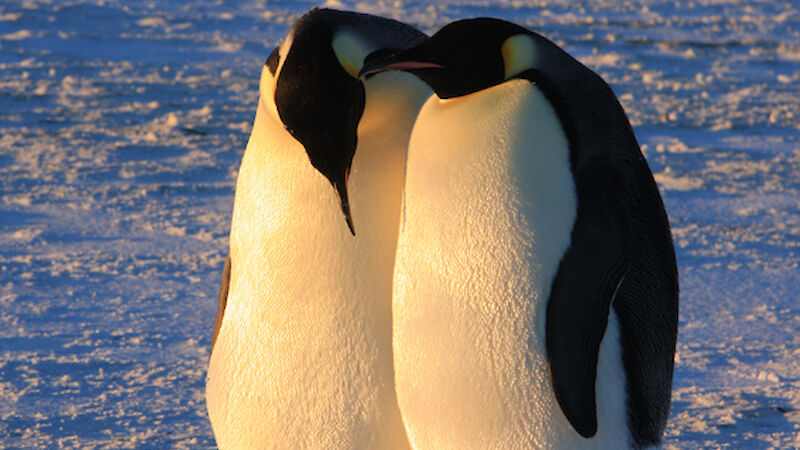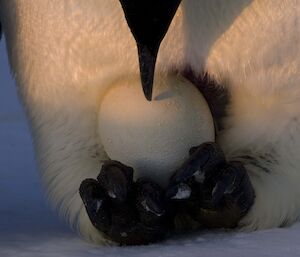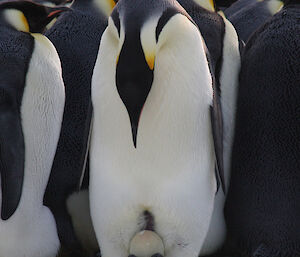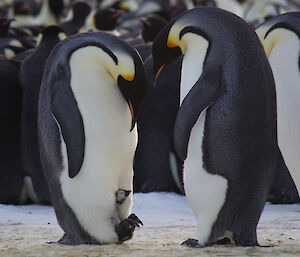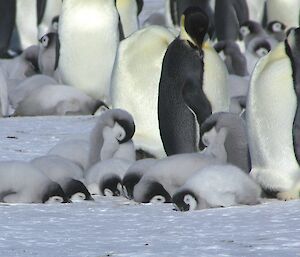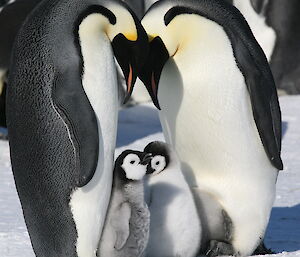Emperor penguins return year after year to the same location. The first thing they have to do is relocate their mates or, if they haven’t bred before, find one! At this time there is a lot of activity in the colony with many penguins wandering around, singing their songs and performing courtship behaviours. These include a wide range of displays ranging from head bowing to head swinging and walking around in a most impressive manner.
Once a pair has formed (or re-formed) and decided to breed, they copulate and eventually the female produces a single egg. Emperor penguins breed on the sea-ice in bitterly cold conditions. There are no materials to build nests from but the eggs have to be kept warm until they hatch. So the female, who leaves the colony over winter, gives the egg to her partner who carefully puts it on his feet and covers it with a skin fold. In this way the egg is kept toasty warm at about 38 °C while the outside temperatures can drop well below −35 °C.
Incubating the eggs
In late May/early June, there is an exodus of penguins (mainly females) from the colony. Suddenly it becomes rather quiet. The singing of the courtship period stops and only occasional calls are heard. The females track across the fast-ice and head for the sea while the males stay behind to incubate the eggs. During the winter storms they huddle closely together to keep warm. They haven’t eaten anything except a little snow since they arrived at the colony nearly 2 months ago. The males cannot go out and feed with the egg on their feet. It takes 65 to 75 days for the eggs to hatch – by the time the chicks appear, their fathers have fasted for 4 months! The males rely entirely on the body fat that they laid down during summer to survive the long winter fast.
Hatching
When the females finally return to the colony in July the males have lost nearly half their body mass and look quite skinny. The females, who having been out hunting all this time, are big and beautiful. Males and females recognise each other by their calls and it is remarkable how quickly a female can locate her mate among thousands of penguins when she comes home. She has to work quite hard to convince her mate to let her have the egg back or hand over the tiny chick. He has been looking after the egg all winter and although very hungry he is most reluctant to let it go.
The chicks are very small when they hatch weighing only about 150 g to 200 g (adult penguins weigh 22 kg to 30 kg at this time of year). They only have a very thin layer of down and are not yet able to regulate their own body temperature. It takes about 50 days to develop that ability. Until then it is up to the parents to keep the chicks warm. Since they are still very small they fit comfortably in the brood pouch.
Raising the chicks
During the chick rearing period there is a lot of activity in the colony – parents coming and going, chicks looking for anybody willing to feed them – there is a lot of walking around and calling. Both parents take turns brooding their offspring until the youngsters are able to stand on the ice by themselves. By September, the chicks have grown a thick cover of down and are developing quite rapidly. Growing requires a lot of energy so they are always hungry. It now takes both parents to go out and gather food for the youngsters. When the little ones are left at the colony they form huddles, especially at night, to keep warm.
In early December the chicks are nearly as big as their parents. Suddenly little black patches appear on their flippers. The youngsters are beginning to grow real feathers and they start shedding their down. At this time of year, the number of adults in the colony gets smaller and smaller. Parents that lost their chick, adults that missed out on breeding and adults that are not ready to reproduce yet, tend to go out to sea at this time to start fattening up for their annual moult.
A tough choice
Parents still feeding chicks have to make a decision as to how long they are going to continue to look after the little one. If they leave the chick too early and it has not got enough energy reserves to finish the moult it will die and the parents have wasted an entire breeding season. However, if they continue feeding the chick for too long, they may compromise their own ability to feed and fatten up for their moult. Adults have to almost double their body mass before the moult. When they start shedding their old feathers their plumage is no longer waterproof and they cannot go to sea and feed. So for the month that it takes to replace the old feathers they depend solely on the body fat that they accumulate after leaving their chick and before they start to moult.
The end of the cycle
It is not necessary for the penguins to return to the colony to grow their new plumage. While some birds do return, others travel great distances and find themselves a place where they can sit on the ice and moult. As long as they can stay out of the water it does not matter where they haul out. Replacing every single feather is energetically very expensive. By the time the new plumage has grown the penguins have lost nearly half their body mass. In January and February the emperor penguins return to sea to fatten again in preparation for the next breeding season.

